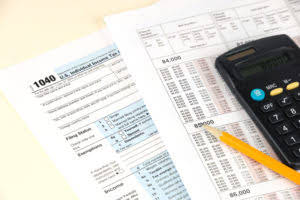What Are Liabilities? Definition, Examples, and Types

In accounting, operating expenses are recorded as liabilities until they are paid off. For example, wages payable are considered a liability as it represents the amount owed to employees for their work but not yet paid. Any debt a business or organization has qualifies as a liability—these debts are legal obligations the company must pay to third-party creditors. Examples of liabilities include deferred taxes, credit card debt, and accounts payable.
- Assets and liabilities in accounting are two significant terms that help businesses keep track of what they have and what they have to arrange for.
- Liabilities are settled over time through the transfer of economic benefits including money, goods, or services.
- Liabilities are a key part of a company’s financial structure, showing how a business funds its operations and growth.
- It compares your total liabilities to your total assets to tell you how leveraged—or, how burdened by debt—your business is.
- Liabilities are a vital aspect of a company because they’re used to finance operations and pay for large expansions.
Contingent liabilities

As liabilities impact both the balance sheet and cash flow statement, businesses must carefully consider their decisions regarding debt, tax management, and other obligations. Proper understanding and management of liabilities in accounting are essential for a company’s financial stability and growth. By keeping track of these obligations and ensuring they are met in a timely manner, a company can successfully avoid financial crises and maintain a healthy financial position.

What is a liability? Definition and examples
The impact of these liabilities can significantly influence a company’s financial statements, making it essential for businesses to monitor, manage and strategically plan their liability structure. Familiarity with these concepts can help stakeholders make informed decisions about a company’s financial well-being and future prospects. Liabilities in accounting are any debts your company owes to someone else, including small business loans, unpaid bills, and mortgage payments. If you made an agreement to pay a third party a sum of money at a bookkeeping later date, that is a liability. As liabilities increase, they may affect a company’s financial health and stability.
Liabilities
Liabilities are aggregated on the balance sheet within two general classifications, which are current liabilities and long-term liabilities. You would classify a liability as a current liability if you expect to liquidate the obligation within one year. If there is a long-term note or bond payable, that portion of it due for payment within the next year Food Truck Accounting is classified as a current liability.
- Liabilities are probable non-ownership claims against a business firm.
- Liabilities can take various forms, like loans, mortgages, or accounts payable, and play a significant role in determining a company’s financial health and risk.
- These expenses are recorded in the income statement and the corresponding liability is reported in the balance sheet.
- He is a CFA charterholder as well as holding FINRA Series 7, 55 & 63 licenses.
Get free guides, articles, tools and calculators to help you navigate the financial what are liabilities in accounting side of your business with ease.
- This enables decision-makers to prioritize their payments and allocate resources accordingly.
- On the other hand, long-term liabilities, or non-current liabilities, extend beyond a year.
- 11 Financial may only transact business in those states in which it is registered, or qualifies for an exemption or exclusion from registration requirements.
- With Expense Management, you can set spending limits, automate approvals, and track every payment to ensure timely settlements and reduce the risk of default.
- Any debt a business or organization has qualifies as a liability—these debts are legal obligations the company must pay to third-party creditors.
